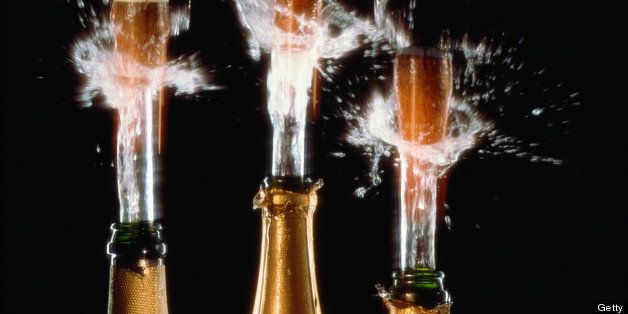
Have you ever wondered how best to pour Champagne into a flute to preserve the precious fizz? Is the traditional method of pouring Champagne into an upright glass the best way, or is it better to pour into the glass at a slant? How do we make sure that the bubbles are shown off to their best effect and remain in the glass for the optimal amount of time?
The concentration of dissolved CO2 in Champagne and sparkling wines is the real key to the production of bubbles. But the act of pouring Champagne into a glass is far from inconsequential, in terms of its effect on the dissolved CO2 concentration of the Champagne in the glass. We investigated the effect of two different pouring methods on the loss of dissolved CO2 concentration. One method involved pouring Champagne straight down the middle of a vertically oriented flute. The other one involved pouring Champagne down the side of a tilted flute. The latter, "beer-like" way of serving Champagne was found to have significantly less impact on the concentration of dissolved CO2 than the former method. This is because the beer-like way of serving champagne is gentle. Champagne flows softly along the glass wall to progressively fill the flute. Pouring champagne straight down the middle of a vertically oriented glass produces turbulence and also traps air bubbles in the liquid, both of which force dissolved CO2 to escape more rapidly from the champagne.
We also discovered that the higher the Champagne's temperature, the higher the loss of dissolved CO2 during the pouring process -- the first analytical proof that low temperatures help Champagne retain its effervescence during pouring. The reason for this is that, generally speaking, the viscosity of a liquid (in everyday terms, how "thick" or "thin" it is) decreases (that is, grows "thinner") as its temperature increases. Imagine how honey becomes thinner and flows more easily when heated, thereby decreasing in viscosity; in just the same way, increasing the temperature of Champagne decreases its viscosity. In turn, a low Champagne viscosity promotes more turbulence and agitation in the Champagne liquid during the pouring process, thus forcing dissolved CO2 to escape more rapidly from Champagne. These findings were corroborated when we employed a new dynamic tracking technique that uses infrared imaging to visualize the cloud of gaseous CO2 that escapes during the pouring process.
Our conclusion? It is quite straightforward: we should treat Champagne a little more like beer -- at least, when it comes to serving it.